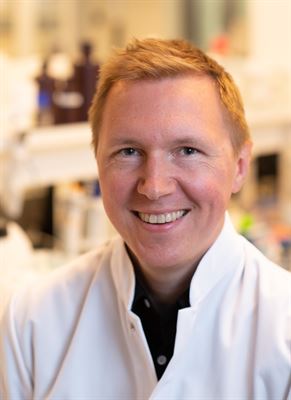Rare hyperinflammatory syndrome in children with COVID-19 described

Researchers at Karolinska Institutet and Science for Life Laboratory in Sweden and Tor Vergata University of Rome in Italy have mapped the immune response in children affected by a rare but life-threatening inflammatory syndrome associated with COVID-19. The study, which is published in the scientific journal Cell, reveals that the inflammatory response differs from that in Kawasaki disease and severe acute COVID-19.
In the current SARS-CoV-2 pandemic, with very few exceptions, children have presented with mild symptoms. However, paediatricians have discovered a new, life-threatening hyperinflammatory syndrome resembling Kawasaki disease and named Multisystem Inflammatory Syndrome in Children associated with COVID-19, MIS-C (see box).
In a new collaborative study, researchers have worked out the immunological aspects of this rare condition. They compared blood samples from 13 MIS-C-patients treated at Karolinska University Hospital in Stockholm, Sweden and Bambino Gesù Children’s Hospital in Rome, Italy, with samples from 28 Kawasaki disease patients collected from 2017 to 2018, prior to COVID-19. The analyses also included samples from children with mild COVID-19.
“Our results show that MIS-C is truly a distinct inflammatory condition from Kawasaki disease, despite having some shared features,” says Petter Brodin, paediatrician and researcher at the Department of Women’s and Children’s Health, Karolinska Institutet, and one lead author of the study. “The hyperinflammation and cytokine storm detected in children with MIS-C is also different from that seen in adult patients with severe, acute COVID-19, which we recently described in another publication.”
When comparing MIS-C to these other inflammatory states, the study observed differential frequency of specific immune cell populations, inflammatory cytokines and chemokines in the blood. Unlike children with Kawasaki disease and children with mild COVID-19, children who developed MIS-C were lacking IgG-antibodies to common cold coronaviruses. The researchers also found several autoantibodies that target the body’s own proteins and that may contribute to the pathogenesis of MIS-C. They are now also looking into genetic risk factors for developing MIS-C after SARS-CoV-2 infection.
“There is an urgent need to better understand why a small minority of children infected with SARS-CoV-2 develop MIS-C, and we are adding a piece to the puzzle,” says Dr Brodin. “Better knowledge of the pathogenesis is important for development of optimal treatments that can dampen the cytokine storm and hopefully save lives, as well as for vaccine development to avoid MIS-C caused by vaccination.”
The study was a collaborative effort led by Petter Brodin and his team at Science for Life Laboratory and Karolinska Institutet, together with Nils Landegren’s group at KI and Paolo Palma’s lab at Tor Vergata University of Rome. It was financed by the Knut and Alice Wallenberg Foundation (KAW), Bure Equity AB, Jonas and Christina af Jochnick Foundation, the SciLifeLab/KAW national COVID-19 research program project grant, the Bambino Gesù Children’s Hospital, 5 X mille 2019, and Ricerca Corrente 2020. The authors declare that there is no conflict of interest.
Publication: “The Immunology of Multisystem Inflammatory Syndrome in Children with COVID-19”. Camila Rosat Consiglio, Nicola Cotugno, Fabian Sardh, Christian Pou, Donato Amodio, Lucie Rodriguez, Ziyang Tan, Sonia Zicari, Alessandra Ruggiero, Giuseppe Rubens Pascucci, Veronica Santilli, Tessa Campbell, Yenan Bryceson, Daniel Eriksson, Jun Wang, Alessandra Marchesi, Tadepally Lakshmikanth, Andrea Campana, Alberto Villani, Paolo Rossi, the CACTUS study team, Nils Landegren, Paolo Palma, Petter Brodin. Cell, online 6 September 2020, doi: 10.1016/j.cell.2020.09.016.
Kawasaki disease and MIS-C
In March and April 2020, paediatricians in Italy, France and the UK noted an increased incidence of children presenting with symptoms resembling those of Kawasaki disease, a severe inflammatory condition that mainly affects children under 5 years of age. However, children affected by hyperinflammation after being infected by SARS-CoV-2 differed from patients with classical Kawasaki disease in that they were older and often presented with more severe disease. The new, life-threatening syndrome was named Multisystem Inflammatory Syndrome in Children associated with COVID-19 (MIS-C). It presents 4-6 weeks after infection as high fever, organ dysfunction and strongly elevated markers of inflammation. Both Kawasaki disease and MIS-C are conditions where a misdirected immune response elicited by a virus leads to autoimmune attack on normal proteins in tissues such as the heart and blood vessels.
For more information, please contact:
Petter Brodin, paediatrician, researcher
Department of Women’s and Children’s Health, Karolinska Institutet
Science for Life Laboratory (SciLifeLab)
Karolinska University Hospital
Phone: +46 (0)8 524 813 96
Email: Petter.Brodin@ki.se
Karolinska Institutet is one of the world’s leading medical universities. Our vision is to advance knowledge about life and strive towards better health for all. Karolinska Institutet accounts for the single largest share of all academic medical research conducted in Sweden and offers the country’s broadest range of education in medicine and health sciences. The Nobel Assembly at Karolinska Institutet selects the Nobel laureates in Physiology or Medicine.
Tags:


